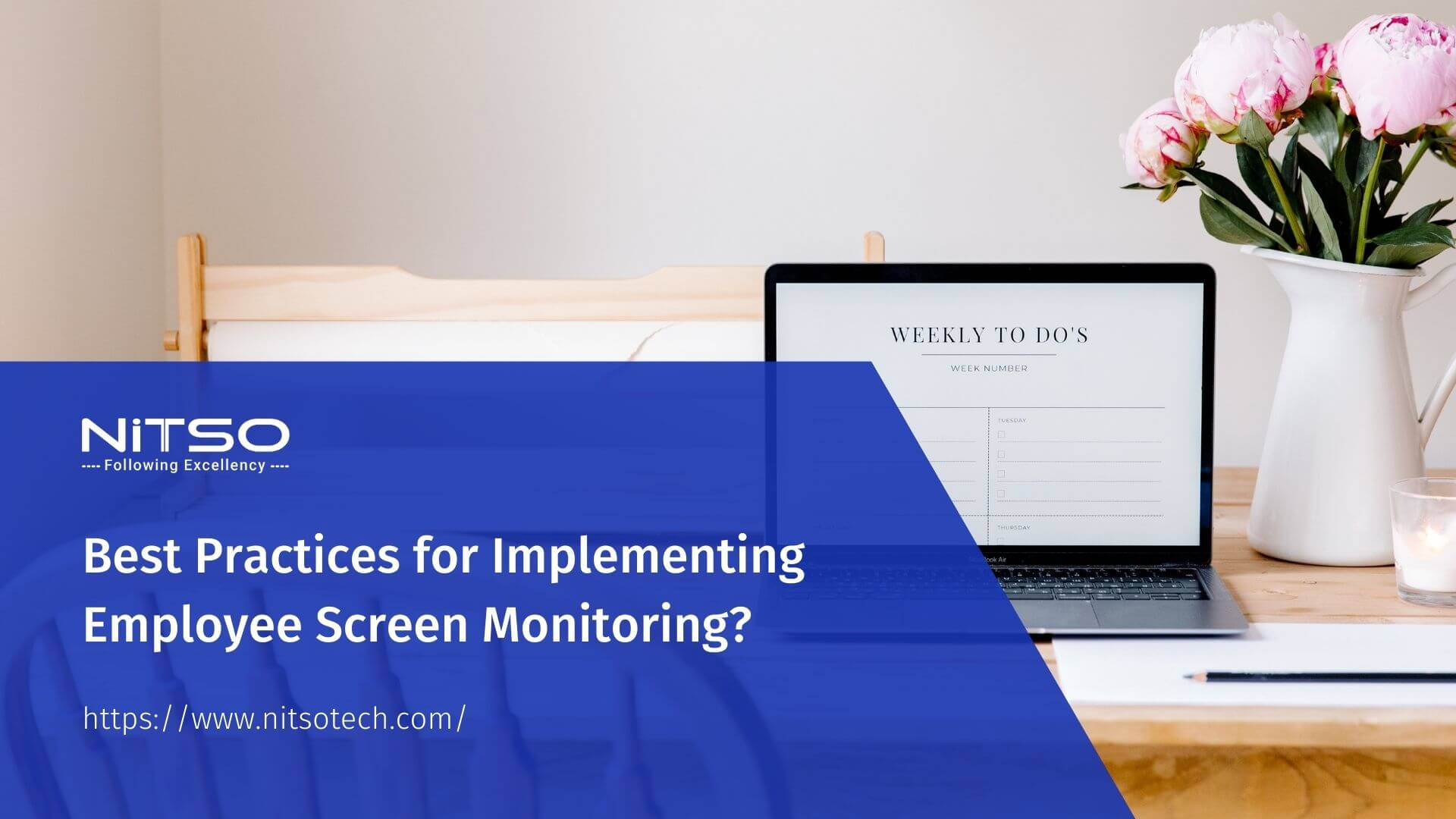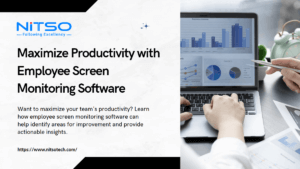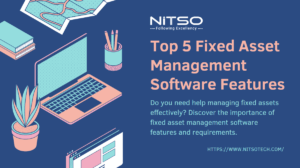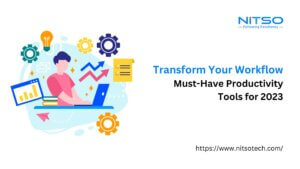Are you concerned about employee productivity and data security in your organization? In today’s digital age, where remote work and flexible schedules are becoming increasingly common, implementing employee screen monitoring has emerged as a crucial strategy for businesses of all sizes. While the concept may seem intrusive, when implemented correctly, it can foster a transparent and accountable work environment, enhance productivity, and safeguard sensitive information. Employee screen monitoring in India is a growing practice, and it’s essential to understand the best practices to ensure compliance with legal regulations and maintain a positive work culture. This comprehensive guide will explore the nuances of employee screen monitoring, from choosing the right software to addressing employee concerns and fostering trust.
Content On This Page
What is Employee Screen Monitoring?
Employee screen monitoring is the practice of tracking and recording an employee’s computer activities, such as keystrokes, websites visited, applications used, and time spent on various tasks. This technology has gained significant traction in recent years as organizations seek to enhance productivity, ensure data security, and maintain compliance with relevant regulations.
In the digital age, where remote work and bring-your-own-device (BYOD) policies are becoming increasingly prevalent, employee screen monitoring offers a powerful tool for organizations to monitor and manage their workforce’s activities. By gaining insights into how employees utilize their time and resources, companies can identify areas for improvement, optimize workflows, and mitigate potential risks associated with data breaches or misuse of company assets.
Employee screen monitoring can be implemented through various software solutions that capture and analyze data from employee computers or mobile devices. These solutions typically offer features such as real-time monitoring, activity logging, screenshot capturing, and advanced reporting capabilities. The collected data can then be analyzed to identify patterns, track productivity, and detect potential policy violations or security threats.
While employee screen monitoring can be a valuable asset for organizations, it is crucial to strike a balance between monitoring and respecting employee privacy. Implementing such measures without clear policies and transparent communication can lead to mistrust, decreased morale, and potential legal implications. In India, there are specific laws and regulations governing employee monitoring, which organizations must carefully navigate to ensure compliance and maintain a positive work environment.
What are the Legal Considerations and Compliance Requirements?
While employee screen monitoring offers numerous benefits for organizations, it is imperative to navigate the legal landscape carefully. In India, there are specific laws and regulations governing employee privacy and data protection that must be adhered to when implementing such monitoring practices.
The Indian Constitution guarantees the fundamental right to privacy, and this extends to the workplace. The Information Technology Act, 2000, and the Information Technology (Reasonable Security Practices and Procedures and Sensitive Personal Data or Information) Rules, 2011, provide guidelines for the collection, processing, and storage of personal data, including employee data.
Organizations must ensure that their employee screen monitoring practices are transparent, proportionate, and have a legitimate purpose, such as maintaining data security, protecting intellectual property, or ensuring compliance with company policies. They must also obtain explicit consent from employees before implementing any monitoring measures, and provide clear communication about the scope, purpose, and duration of the monitoring.
Additionally, the employee screen monitoring software used must comply with data protection regulations, such as the General Data Protection Regulation (GDPR) if the organization handles the personal data of European Union citizens. Failure to comply with these regulations can result in significant fines and legal consequences.
It is crucial for organizations to consult legal experts and develop comprehensive employee screen monitoring policies that align with the relevant laws and regulations. These policies should outline the purpose of monitoring, the types of activities being monitored, the data collected, and the measures taken to protect employee privacy.
How to Choose the Right Employee Monitoring Software?
With multiple employee monitoring software options available in the market, selecting the right solution that aligns with your organization’s needs and legal requirements is crucial. Here are some key factors to consider when evaluating potential software:
- Features and Functionality: Assess the software’s capabilities and ensure it meets your specific monitoring requirements. Look for features such as keystroke logging, website tracking, application monitoring, screenshot capturing, and real-time alerts.
- Data Security and Privacy: Prioritize solutions that adhere to stringent data security and privacy standards. The software should encrypt data transmission, offer granular access controls, and provide robust data protection measures to safeguard employee privacy.
- Scalability and Integration: As your organization grows, the employee monitoring software should be able to scale seamlessly. Additionally, consider its integration capabilities with existing systems, such as project management tools, HR software, and productivity suites.
- Reporting and Analytics: Comprehensive reporting and analytics features are essential for gaining actionable insights from the collected data. Look for software that offers customizable reports, data visualization tools, and advanced analytics capabilities.
- User Experience: A user-friendly interface and intuitive navigation can greatly enhance the adoption and utilization of the employee monitoring software. Consider solutions that prioritize a positive user experience for both administrators and employees.
- Legal Compliance: Ensure that the software provider is well-versed in the legal requirements and regulations surrounding employee monitoring in India. The solution should offer features and guidance to help your organization maintain compliance.
- Support and Training: Reliable technical support and comprehensive training resources are critical for the successful implementation and ongoing maintenance of the employee monitoring software.
By carefully evaluating these factors and conducting thorough research, including reading reviews, requesting demos, and consulting with experts, organizations can select an employee screen monitoring software solution that meets their unique needs while fostering a transparent and legally compliant monitoring environment.
Need Better Workplace Oversight? Try Nitso Desk Monitor Today!
What are the Steps for Implementing Employee Screen Monitoring?
Once you have chosen the right employee monitoring software, the next step is to implement it effectively within your organization. A well-planned and transparent implementation process is crucial for ensuring compliance, maintaining employee trust, and maximizing the benefits of the monitoring system.
- Develop a Comprehensive Policy: Create a detailed employee monitoring policy that outlines the purpose, scope, and procedures of the monitoring program. This policy should be in line with relevant laws and regulations, and clearly communicate the expectations, rights, and responsibilities of both the organization and employees.
- Communicate Transparently: Effective communication is key to building trust and minimizing resistance. Provide employees with clear and concise information about the monitoring program, its objectives, and the steps taken to protect their privacy. Address any concerns or questions they may have in a timely and empathetic manner.
- Obtain Consent: Depending on the applicable laws and regulations, you may need to obtain explicit consent from employees before implementing employee monitoring. Provide them with the necessary information and documentation, and ensure that their consent is voluntary and informed.
- Train Stakeholders: Conduct comprehensive training sessions for all stakeholders involved, including IT personnel, managers, and employees. Ensure that everyone understands the monitoring system, its features, and their respective roles and responsibilities.
- Implement Gradually: Consider a phased implementation approach, starting with a pilot program or rolling out the monitoring system to smaller groups initially. This will allow you to identify and address any issues or concerns before a full-scale deployment.
- Establish Monitoring Protocols: Define clear protocols for monitoring activities, data collection, and data handling. Implement access controls and ensure that only authorized personnel can access sensitive information.
- Regularly Review and Update: Regularly review and update your employee monitoring policies, procedures, and software to ensure compliance with evolving laws and regulations, as well as to address any emerging concerns or challenges.
By following these steps and maintaining transparency throughout the implementation process, organizations can effectively leverage employee monitoring while fostering a culture of trust, accountability, and respect for employee privacy.
What are the Best Practices for Effective Monitoring?
Implementing employee screen monitoring is just the first step; to maximize its benefits and maintain a positive work environment, organizations must follow best practices for effective monitoring. Here are some key strategies to consider:
- Clearly Define Monitoring Objectives: Establish clear and specific objectives for your employee monitoring program, such as improving productivity, preventing data leaks, or ensuring policy compliance. This will help you tailor the monitoring activities and avoid unnecessary overreach.
- Implement Monitoring Policies Consistently: Ensure that your monitoring policies are applied consistently across all departments and levels of the organization. Inconsistent or selective implementation can lead to perceptions of unfairness and mistrust among employees.
- Balance Monitoring and Trust: While employee monitoring is essential for maintaining accountability, it’s crucial to strike a balance between monitoring and fostering an environment of trust. Excessive monitoring can lead to decreased morale, productivity, and employee retention issues.
- Protect Employee Privacy: Respect employees’ reasonable expectations of privacy by limiting monitoring to work-related activities and clearly defining what is considered an acceptable use of company resources. Avoid monitoring personal communications or activities unrelated to work.
- Provide Training and Guidance: Offer regular training and guidance to employees on the monitoring policies and procedures. Ensure they understand what is being monitored, why it’s necessary, and how to maintain appropriate conduct while using company resources.
- Implement Access Controls: Establish robust access controls to ensure that only authorized personnel can access and review the monitoring data. This helps maintain employee trust and prevents potential misuse or unauthorized access to sensitive information.
- Regularly Review and Optimize: Continuously review and optimize your employee monitoring practices based on feedback, legal updates, and emerging best practices. Adapt your approach as needed to maintain effectiveness and compliance while minimizing any negative impacts on employee morale or productivity.
By following these best practices, organizations can effectively leverage employee screen monitoring to achieve their objectives while fostering a culture of trust, transparency, and accountability within the workplace.
How to Address Employee Concerns and Foster Trust?
Implementing employee screen monitoring can raise concerns and apprehensions among employees, potentially leading to decreased morale and productivity if not addressed properly. It’s crucial to address these concerns transparently and foster an environment of trust and open communication.
- Communicate the Purpose: Clearly explain the rationale behind employee monitoring, emphasizing its importance for maintaining data security, ensuring compliance, and improving overall productivity. Highlight how it ultimately benefits both the organization and employees.
- Emphasize Privacy Protection: Assure employees that their privacy rights are respected and that the monitoring practices are designed to protect sensitive information while minimizing any unnecessary intrusion into personal activities.
- Involve Employees in the Process: Consider involving employee representatives or unions in the development and implementation of monitoring policies. This collaborative approach can help address concerns and ensure that employee perspectives are taken into account.
- Provide Feedback Channels: Establish open and anonymous feedback channels for employees to voice their concerns, ask questions, or suggest improvements to the monitoring program. Address these concerns promptly and transparently.
- Offer Training and Support: Provide comprehensive training and support resources to help employees understand the monitoring system, its features, and how to maintain appropriate conduct while using company resources.
- Recognize and Reward Compliance: Consider implementing incentives or recognition programs for employees who consistently comply with the monitoring policies and demonstrate responsible behaviour while using company resources.
How to Analyze and Interpret Monitoring Data?
The true value of employee screen monitoring lies in the insights gained from the collected data. Effective data analysis and interpretation are crucial for optimizing productivity, identifying areas for improvement, and making informed decisions.
- Establish Data Collection and Storage Protocols: Define clear protocols for collecting, storing, and securing the monitoring data. Ensure compliance with data protection regulations and implement robust security measures to prevent unauthorized access or data breaches.
- Utilize Data Analytics Tools: Leverage advanced data analytics tools and techniques to gain actionable insights from the monitoring data. These tools can help identify patterns, trends, and anomalies that may not be immediately obvious.
- Develop Customized Reports and Dashboards: Create customized reports and dashboards that provide relevant and actionable information tailored to the specific needs of different stakeholders, such as managers, IT teams, and HR professionals.
- Identify Productivity Bottlenecks: Analyze the monitoring data to pinpoint areas where productivity may be hindered, such as excessive time spent on non-work-related activities or inefficient workflows. Use these insights to implement targeted improvements.
- Monitor Compliance and Policy Violations: Leverage the monitoring data to ensure compliance with company policies and regulatory requirements. Identify and address potential policy violations or security breaches promptly.
- Continuously Refine and Optimize: Regularly review and refine your data analysis processes and techniques based on feedback, emerging trends, and evolving business needs. Continuously optimize your approach to maximize the value derived from the monitoring data.
By effectively analyzing and interpreting the data collected through employee screen monitoring, organizations can gain valuable insights, identify areas for improvement, and make data-driven decisions that enhance productivity, ensure compliance, and contribute to the overall success of the organization.
Wrapping Up
Implementing employee screen monitoring is a strategic decision that can yield significant benefits for your organization, but it requires careful planning and execution. By following best practices, such as choosing the right software, setting clear policies, communicating transparently, and respecting employee privacy, you can create a work environment that promotes accountability, productivity, and data security. Remember, the key to successful employee screen monitoring lies in striking the right balance between monitoring and trust-building. Embrace this practice with empathy and a commitment to fostering a positive work culture, and your organization will be well-equipped to navigate the challenges of the modern digital landscape while safeguarding its most valuable assets – its people and its data.








0 Comments